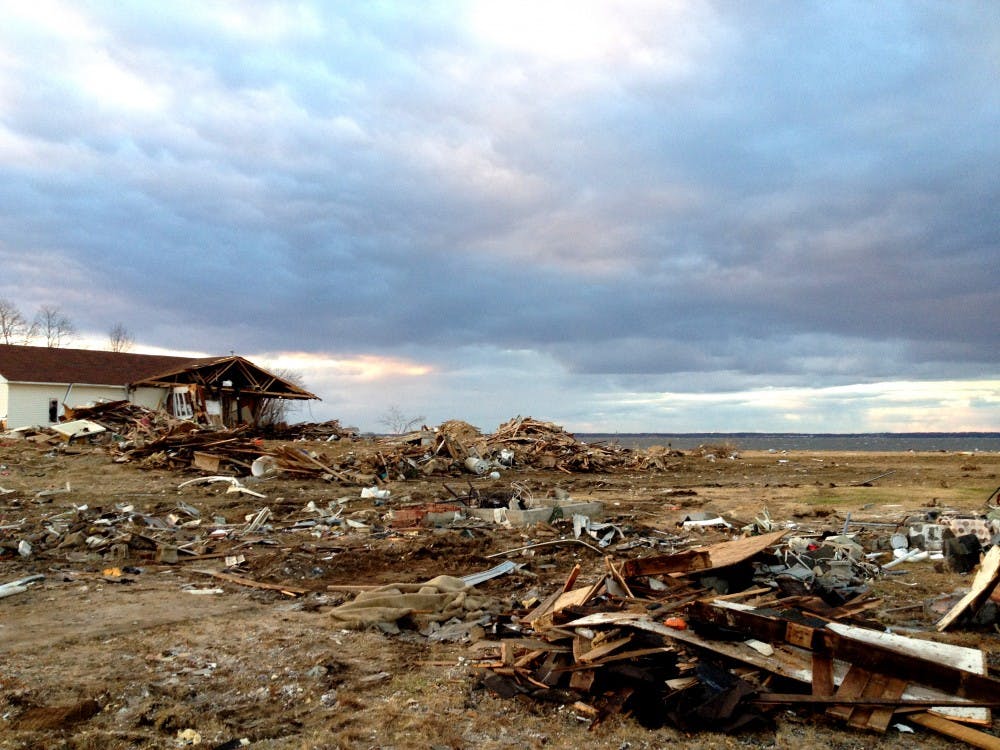
Through its cooperation with the Jon Bon Jovi Soul Foundation, Penn's Center for High Impact Philanthropy conducted reasearch on the viability of impact investing as a way to combat donor fatigue in the wake of Hurricane Sandy. | Courtesy of Wavian/Creative Commons
In his song "Livin' On a Prayer," Jon Bon Jovi tells his listeners, "take my hand, and we'll make it I swear." Through its cooperation with the Jon Bon Jovi Soul Foundation, Penn's Center For High Impact Philanthropy has answered his call.
The lingering effects of Hurricane Sandy on the Atlantic coast were at the heart of the partnership between CHIP and Bon Jovi, which seeks to reinvigorate the economies in affected communities.
For Bon Jovi, a New Jersey native, the destruction left in Sandy’s wake hit home quite literally, and so as donations dried up, he sought other ways to continue the rebuilding efforts. On the hurricane’s second anniversary, Bon Jovi and his foundation asked CHIP to conduct research on the viability of impact investing as a way to combat donor fatigue. Impact investing differs from typical philanthropic donations in that it relies on future monetary returns, just as any typical investment does.
As a result of its work in the past, CHIP was particularly well suited for the task of assessing each New Jersey county's potential for successful impact investments. CHIP's founding executive director Katherina Rosqueta said she views her organization's work with the Jon Bon Jovi Soul Foundation as an extension of the philanthropic work it has been doing since the Haitian earthquake in 2010.
The Center’s work with disaster relief in Haiti, as well as research on foreclosure patterns from 2008 to 2010, informed its approach in New Jersey.
But the importance of those two projects goes far beyond familiarity with procedures and data. CHIP's connections with organizations like the Disaster Accountability Project, the Center for Disaster Philanthropy and foreclosure agencies gave it an advantage its work with the Jersey shore.
“It’s not just about the little team at the Center for High Impact Philanthropy,” Rosqueta said. “We are actually a hub in a whole network of practitioners, researchers, evaluators and sources of data.”
That "little team" primarily consisted of Rosqueta, Director of Partnerships and Strategic Initiatives Carra Cote-Ackah and Fels Institute of Government graduate student Christina Saggiomo. Over the course of last year, the Center coordinated with experts across many industries and reached out to the very people who were affected by the hurricane.
“It was a very intensive process,” Saggiomo said. “There are so many different parts of the problem, so many different angles to understand when you think about a disaster, when you think about philanthropy [and] when you think about investment impact.”
CHIP's findings revealed that the problems in some communities stretch back to before the hurricane to the economic downturn of 2008.
“These were communities whose economies were already not in a good a place, and the social needs around them were not sufficient,” Cote-Ackah said. “When Sandy hit, it was this powerful force on the community that further destabilized conditions.”
Impact investing has the potential to help build back the afflicted communities, but only time can tell if the shore will ever return to its heyday.
The Daily Pennsylvanian is an independent, student-run newspaper. Please consider making a donation to support the coverage that shapes the University. Your generosity ensures a future of strong journalism at Penn.
DonatePlease note All comments are eligible for publication in The Daily Pennsylvanian.





